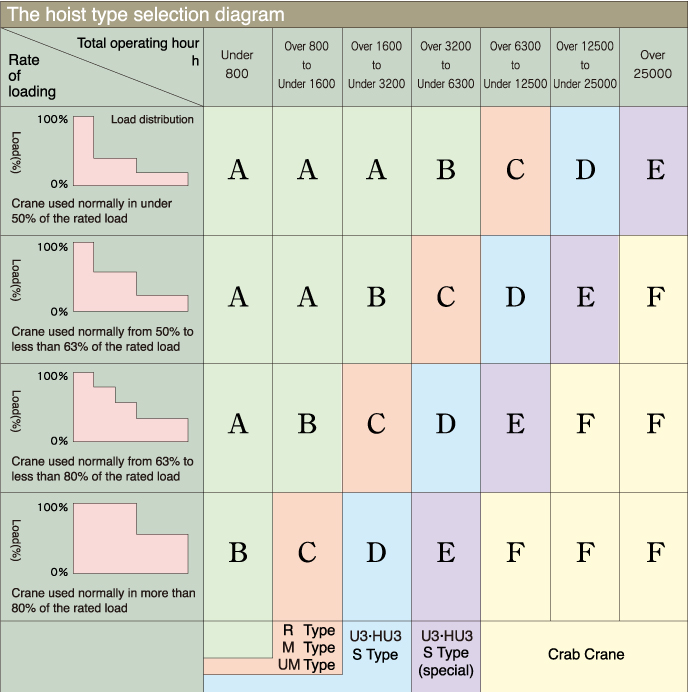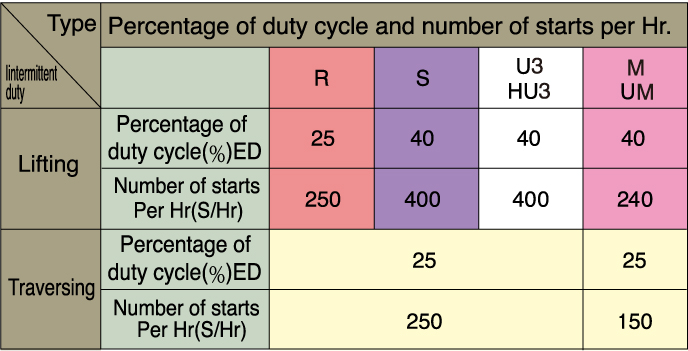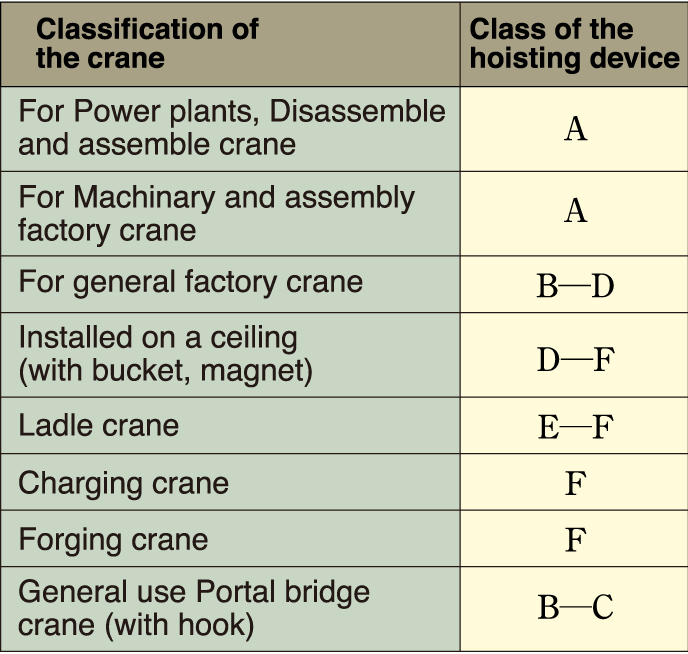Product
Hoist Type selection diagram
The viewpoint of the catalogue
- ①MITSUBISHI Hoist applications and selection diagram, allowable duty cycle and the number of starts per Hr.
The allowable duty cycle and the number of starts per Hr. are described. Confirm how much frequency you use hoist at, and select the most suitable model. - ②Production Overview Table
You can distinguish a production range according to the production overview table. - ③Specifications
We describe basic specifications of the hoist. You can identify wire rope size, motor capacity, lifting and traversing speed, current value, in addition, basic specifications. - ④Outline Drawings
We have outline drawings type-by-type. Minimum head room(N dimensions), general weight, applicable I-Beams are described in it. Please warm being the model that the minimum radius curvatures grows big with the I-Bean of small size by the fascia column of the applicable I-Beam.

- ①Signs such as A or B grade stand for the application group of the crane structure standard.(Japan Ministry of Labor)
- ②C grade applied the hoist of S, U3, HU3 series lift more than 12m.
- ③The license of Crab type production is necessary about the large-capacity hoist more than 30t. In addition, please specify the application group.
Percentage of duty cycle and number of starts per Hr.

- Starting frequencies represent the number of starts during one hour at the busiest rate of operation.
- Special designs are required for applications involving load/time rations in excess of 40% or starting number frequencies in excess of 400/hour, Consult your dealer.

The kind of the crane and crane classes of the hoisting devices

※In the case of dual speed, it is assumed that the ratio between low speed and high speed of the load time is 1:2, and the ratio between low speed and high speed of the maximum number of starts per Hr is 2:1.
※Continuous operating time limit at maximum allowable frequency of use is below
| Load condition | Light(50% of the rated load) | Medium(63% of the rated load) | Heavy(80% of the rated load) |
|---|---|---|---|
| Continuous operating time | Less than 8 hours | Less than 4 hours | Less than 2 hours |
※Please contact us if it exceeds above continuous operating time.